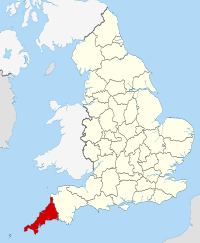
Illustration: OFFERIMUS TIBI DOMINE
The Forerunners of Christ
with Saints and Martyrs.
Artist: Fra Angelico (1395 –1455).
Date: 1420s.
Collection: National Gallery, London.
This File: 31 October 2007.
User: Malus Catulus
(Wikimedia Commons)
Tuesday, 1 November 2022.
All Saints’ Day.
A Holy Day Of Obligation.
Where Will You Go To Mass ?
All Saints’ Day, also known as All Hallows’ Day, Hallowmas, The Feast of All Saints, or, The Solemnity of All Saints.
“All Souls’ Day”.
Artist: Jakub Schikaneder (1855–1924).
Date: 1888.
Collection: National Gallery in Prague.
Source/Photographer: Ophelia2
(Wikimedia Commons)
Wednesday, 2 November 2022.
All Souls’ Day.
Let us, on this day, be present at The Holy Sacrifice of The Mass, when The Church implores God to grant to The Faithful Departed, who can now do nothing for themselves, the remission of all their sins and Eternal Rest.
And let us visit the Cemeteries, where their bodies repose,
and Pray for them. To recite the “De Profundis” (Psalm 129) (The Prayer For The Dead), at the graves, would be a wonderful Act of Charity.
The Holy See granted a Plenary Indulgence on All Souls’ Day, “Toties Quoties” [Editor: Repeatedly. An Indulgence in The Roman Catholic Church that may be gained or granted as often as the required works are performed], applicable to The Souls of The Departed, to all those who visit a Church or Cemetery, and Pray for The Departed, and, also, for the intention of The Sovereign Pontiff.
The following Text is from ONE PETER FIVE
From a Reader, comes this list of the Special Indulgences that can be gained for The Poor Souls in Purgatory during this week of All Souls’ Commemorations:
Courtesy of Bridegroom Press:
Grant #29.1.1.
For The Souls in Purgatory.
Plenary Indulgence.
A Plenary Indulgence, applicable only to The Souls in Purgatory, is granted each and every day from 1 November to 8 November, who devoutly visit a Cemetery and there Pray, if only mentally, for The Departed.
“The Day of The Dead”.
Artist: William-Adolphe Bouguereau (1825–1905).
Date: 1859.
Collection: Bordeaux Beaux-Arts Museum.
Source/Photographer: Unknown.
(Wikimedia Commons)
Grant #29.1.2.
All Souls’ Day.
Plenary Indulgence.
A Plenary Indulgence is granted The Faithful who, on All Souls’ Day, devoutly visit a Church, or an Oratory, and recite one Our Father and The Creed.
English: All Saints' Day in Röke, Sweden.
Swedish City of Röke, during Allhallowtide.
(Note the lighted Candles on all the graves.)
Svenska: Alla helgons dag i Röke i Sverige.
Source: Own work.
Author: David Castor (user:dcastor)
(Wikimedia Commons)
The following Text is from ABBA AVINU
“It is, therefore, a holy and wholesome thought
to Pray for The Dead . . .” (2 Maccabees 12:46).
Today, as we visit the graves of our loved ones who have gone before us, and Pray for their Souls, let us also remember and Pray for those Souls in Purgatory who have no one to Pray for them, or, to offer Holy Masses for them.
Sadly, these days, many Funeral Masses sound like Canonisation Services, when statements are made, like: “He/she (the deceased) must be in Heaven looking at all of you gathered here”, or, “Heaven has gained an Angel, today”; which lead people to believe that the person is now in Heaven and, thus, they neglect Praying for the Soul of the deceased.

To quote “Catholic Answers”: Contrary to common assumption, the purpose of The Funeral Mass is NOT to “celebrate the life of the deceased”, but to offer Worship to God for Christ’s victory over death, to comfort the mourners with Prayers, and to Pray for the Soul of the deceased.
No matter how well a person is presumed to have lived, we cannot assume that he/she has gone straight to Heaven, but we must Pray for the Soul and offer Holy Masses for the deceased.
Saint Augustine of Hippo, Father and Doctor of The Church, wrote in “The City of God”: “By assisting them, we shall not only give great pleasure to God, but will acquire also great merit for ourselves. And, in return for our suffrages, these Blessed Souls will not neglect to obtain for us many Graces from God, but particularly the Grace of Eternal Life.
Illustration: RAIDER COUNTRY
“I hold for certain that a Soul delivered from Purgatory by the suffrages of a Christian, when she [Editor: The Soul] enters Paradise, will not fail to say to God: “Lord, do not suffer to be lost that person who has liberated me from the prison of Purgatory, and has brought me to the enjoyment of Thy Glory sooner than I have deserved.” ”
One of The Spiritual Works of Mercy is: “To Pray for The Living and The Dead.”
Saint John Marie Vianney said: “If it were but known how great is the power of the good Souls in Purgatory with The Heart of God, and, if we knew all the Graces we can obtain through their intercession, they would not be so forgotten. We must, therefore, Pray much for them, that they Pray much for us.”
May Our Lord have mercy on all Souls in Purgatory, and through our Prayers, joined with the intercession of The Blessed Virgin Mary and The Saints, may many Souls see Him, Face to Face, soon.













































